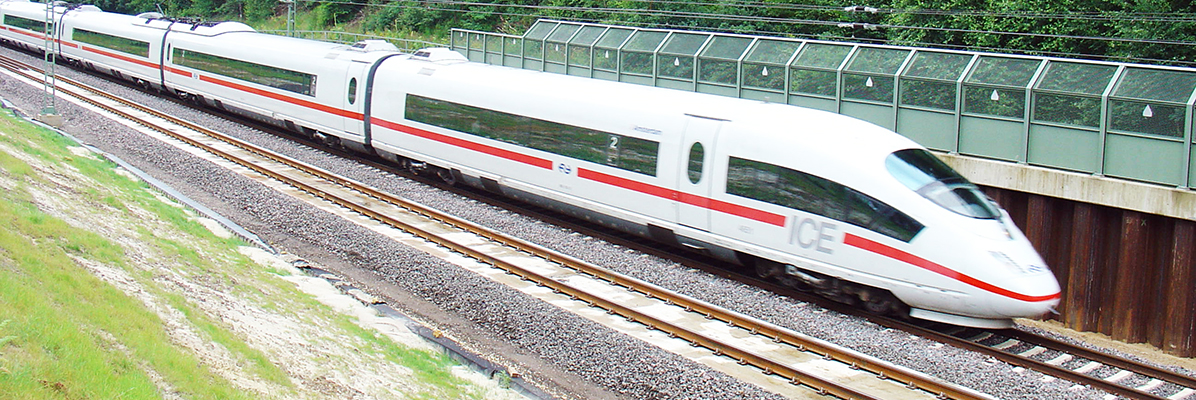4. Description of the production of the Solid Slab Track System – NBU
4.1. General
The concrete comes from either local ready mix concrete plants or will be delivered from mobile concrete mixers to be installed in the course of the rail way sections.
Detailed planning has to be done for the production, delivery and placing of the concrete.
The concrete is produced according to the specific regional physical and chemical requirements. Weather conditions and the relevant technical specifications govern how the pouring, vibration and curing of the concrete is carried out.
4.2. The Solid Slab Track on the ground
The Solid Slab Track System NBU comprises:
- Protection layer against frost
- Reinforced concrete slab with built in longitudinal slots for bedding the tracks
- Fixing the track by means of the ThyssenKrupp ECF, with flexible plates
- Grout – for binding the rail support fixings in the bedding slots.
4.3. Protection from frost
The frost protection layer is laid and compacted on the prepared ground material.
Elasticity modulus = 100 N/mm².
4.4 . The hydraulic setting layer (HSL)
The hydraulic setting layer has an elasticity modulus of at least 5.000 N/mm² and where necessary is laid in two layers. Construction joints are formed at 5 m centres.
4.5. Concrete slab
The concrete slab is laid by means of a sliding fabricator. The steel reinforcement matt is laid on the hydraulic setting layer on spacers.
The steel reinforcement in the bed is used for earthing the cable pylons, signal posts and handrails. Connection is made by means of welding.
4.6. Laying the track
The rails are delivered in 120m long sections, complete with support fastenings ready for laying.
The track section is laid in the precise position by means of special jacks and then bedded in. All measurements are made on the top of the rails so that the precise position is guaranteed.
At this stage the employer carries out the control measurements. Once the precise position of the tracks is approved the employer grants permission for pouring the jointing compound. This process is carried out continuously in order to maintain progress of the work.
At the next stage of the grouting process the rail fastenings are fixed on the concrete slab. After allowing approximately one hour for the grout to harden the rail sockets will again be unfastened. This is to protect the jointing compound from longitudinal and transverse forces causing expansions whilst the grout is hardening and setting.
With professional planning, a production rate of 400 – 500m per 8 hours shift can be expected.
